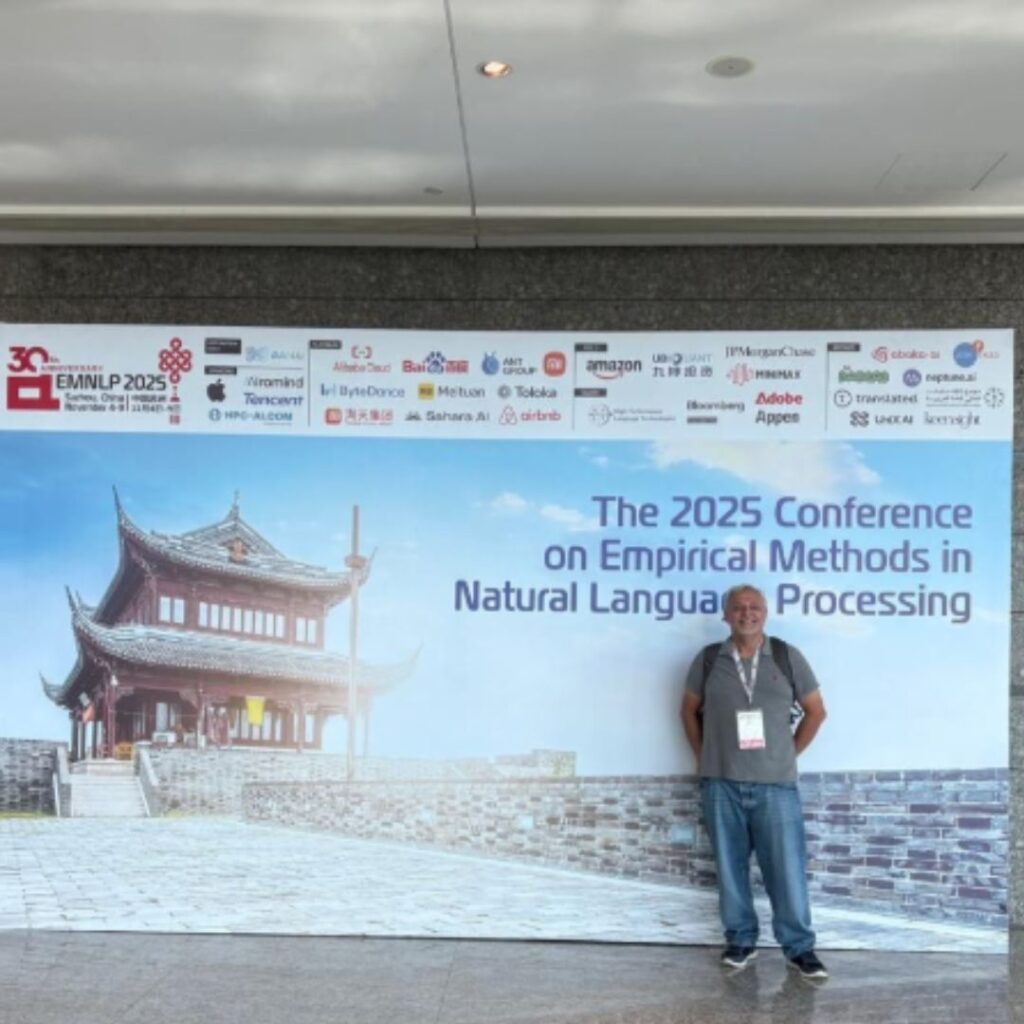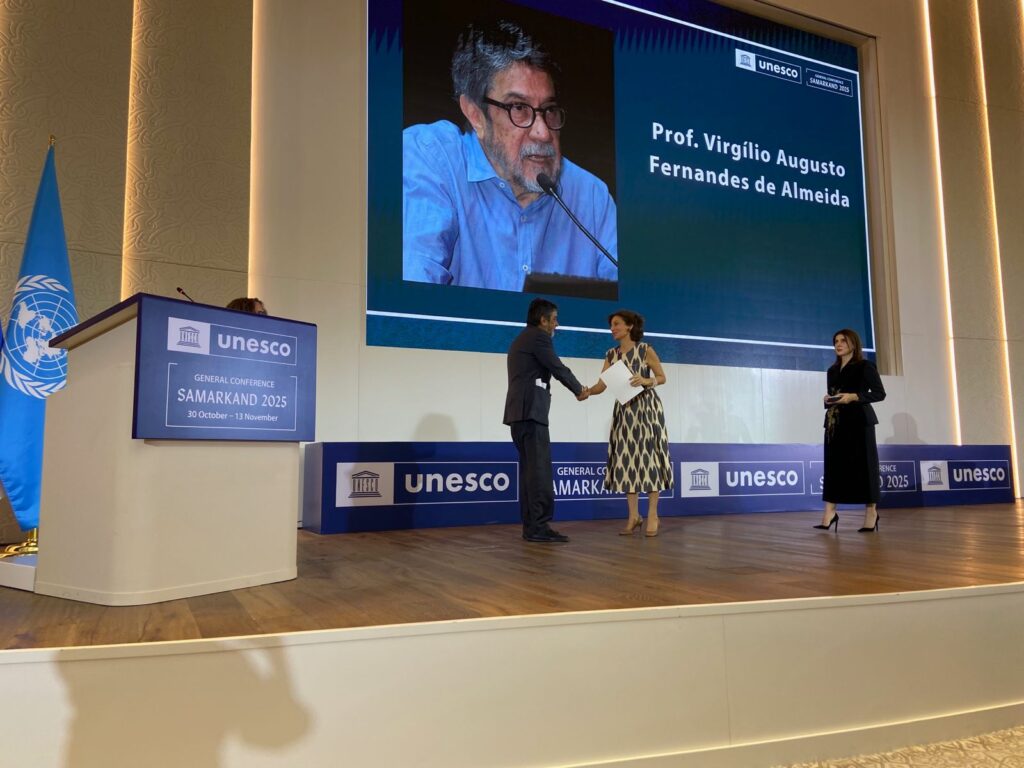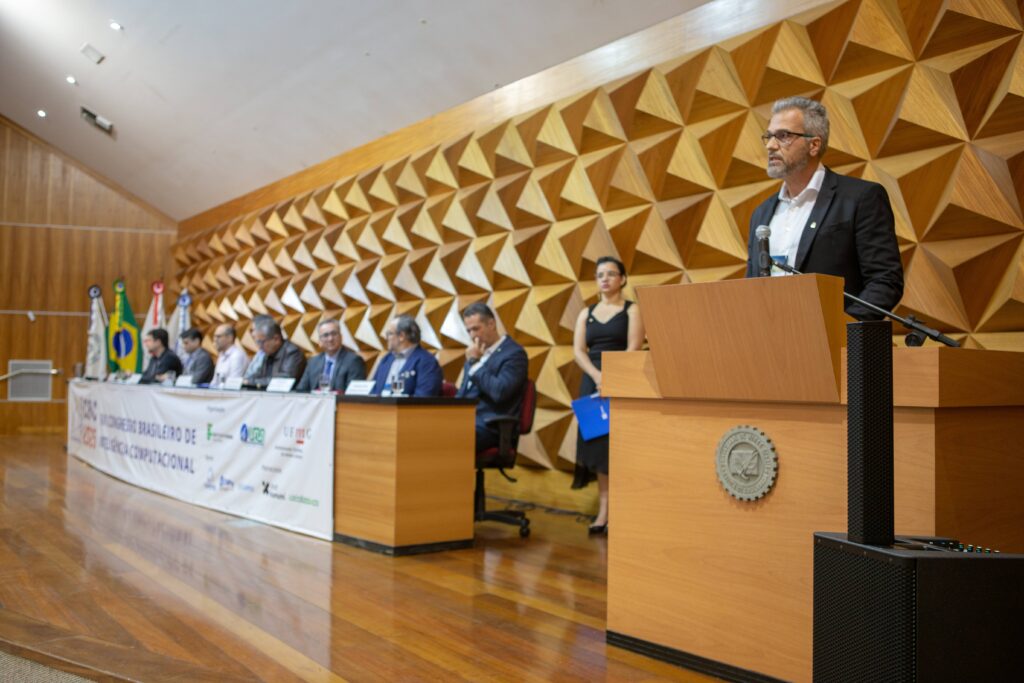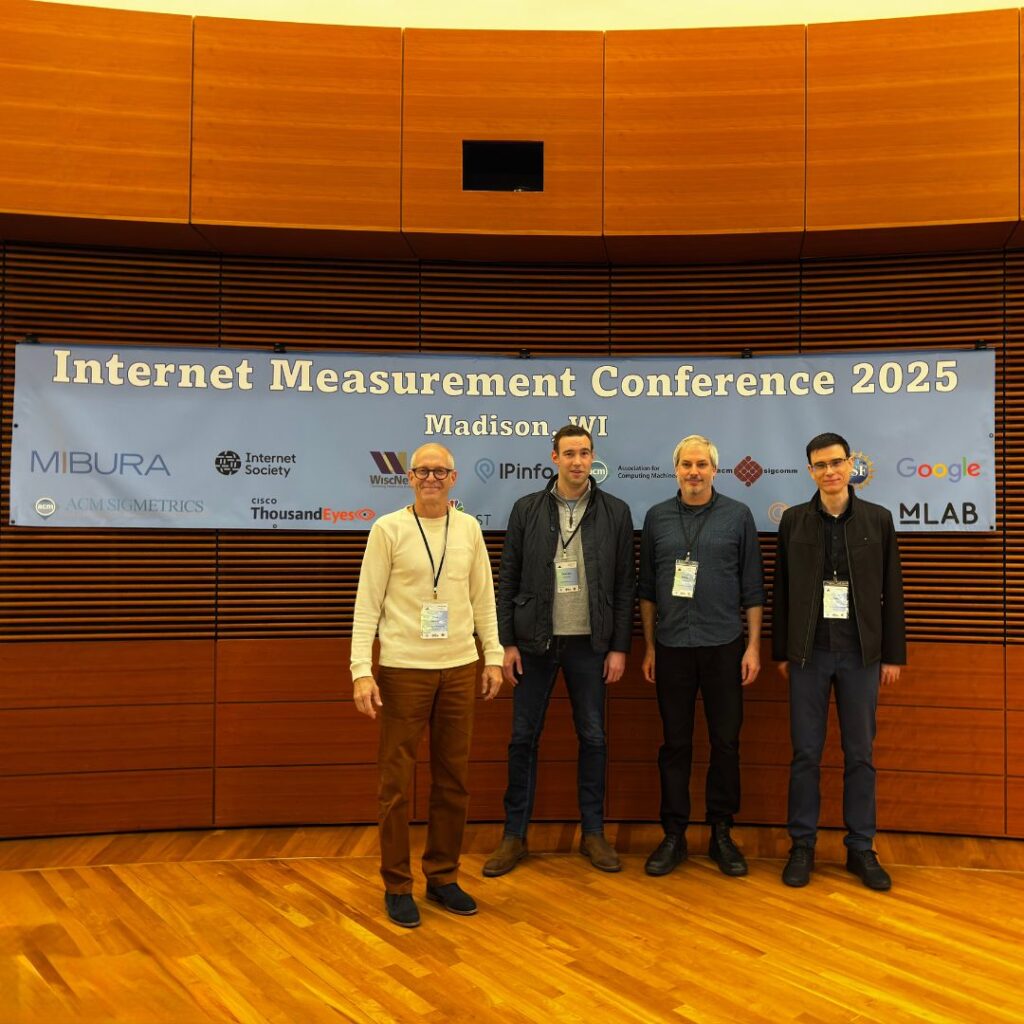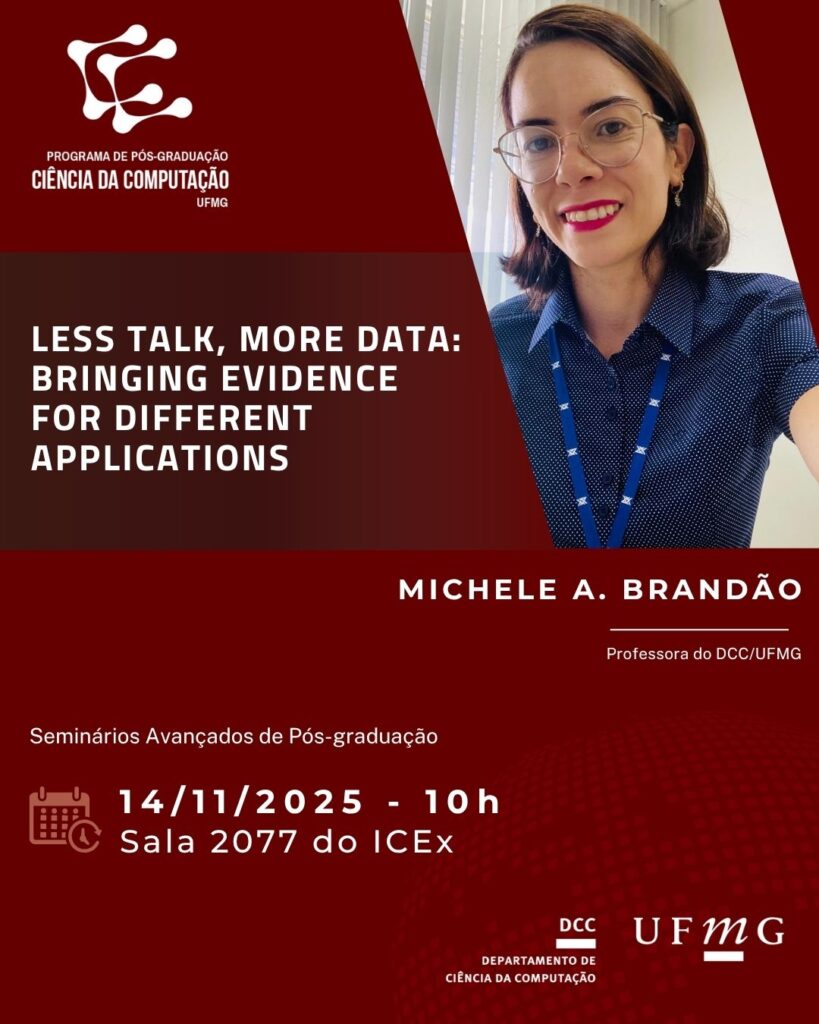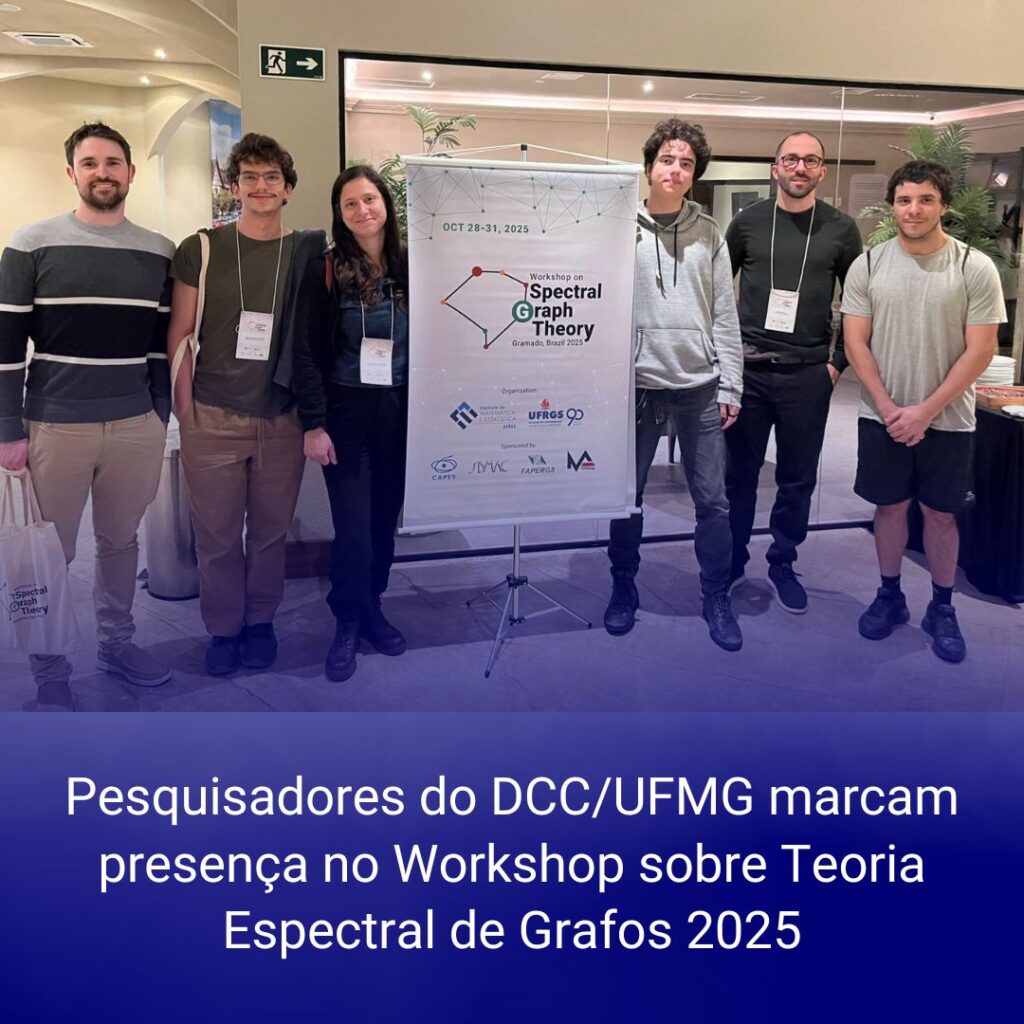Entre os dias 5 e 7 de novembro, na cidade de Antigua, Guatemala, pesquisadores do Departamento de Ciência da Computação (DCC) da Universidade Federal de Minas Gerais (UFMG) participaram de um importante evento promovido pelo IEEE Communications Society (IEEE ComSoc), uma das sociedades técnicas do IEEE (Institute of Electrical and Electronics Engineers) — a maior organização profissional técnica do mundo.
O destaque da participação foi o prêmio de Best Paper recebido pelo artigo “An Efficient Multi-Stage Pipeline for IIoT Threat Detection”, de coautoria dos professores do DCC Michele Nogueira e Aldri Santos, ao lado dos pesquisadores Edllyn Jesus, Evgeni Cruz, Victor Yukio Shirasuna, Daniel Macêdo Batista e Roberto Hirata Jr., todos da Universidade de São Paulo (USP). O trabalho foi reconhecido como o melhor artigo geral do evento, consolidando as pesquisas de ponta na área de segurança em redes e Internet das Coisas Industrial (IIoT) realizadas no departamento.
Abstract:
The rapid growth of the Industrial Internet of Things (IIoT) poses significant security challenges due to constrained resources in devices. Traditional threat detection approaches are inadequate for such environments because they do not consider the low capacity of the devices in a scenario where the detection must be done in a short time interval. This paper proposes a methodology that combines an analysis of sufficient training sample sizes with automatic feature selection techniques of the protocol information for effective anomaly detection. Experiments using an expanded BRURIIoT dataset demonstrate that this approach significantly reduces computational resources and network traffic without compromising detection accuracy, offering an efficient solution for secure IIoT networks. For instance, we observed that by removing 84.5% of the original dataset and 74.9% of the original features, the accuracy was reduced by only 0.16%. Further, with the efficient improvements in the dataset, it was possible to run the inference in constrained devices, something not possible with the original dataset, detecting some attacks in less than 6 seconds. Following good open science practices, all developed code is shared as free and open-source software.
Além do artigo premiado, três trabalhos de alunos do DCC/UFMG foram apresentados no evento, representando a universidade com excelência.
Trabalhos apresentados pelo DCC/UFMG
1. BLOCKCHAIN-ENABLED GREEN IOT FRAMEWORK FOR MITIGATING CARBON FOOTPRINTS IN DATA CENTERS
Autores: Samuel P. Dias (Federal University of Minas Gerais & Federal Institute of Minas Gerais, Brazil); Aldri Santos (Federal University of Minas Gerais, Brazil)
Apresentador: Samuel, doutorando do DCC/UFMG
Abstract:
As data centers become major electricity consumers, their sustainability depends on efficiently integrating renewable energy and carbon offset as members of an IoT ecosystem. To the best of our knowledge, the existing approaches employ centralized auctions, requiring trust in the auctioneer. In contrast, this paper presents ARTEMIS, a permissioned blockchain-based framework for decentralized energy and carbon credit trading. ARTEMIS ensures transparency, traceability, and auditability in a decentralized continuous double-auction environment. Evaluation by simulation confirm ARTEMIS ability to balance cost efficiency, renewable integration, and proportional carbon offsetting. The optimized strategy reduced annual costs by 2.65% compared to renewable-only purchase, while meeting both data center energy demand and complete carbon compensation of non-renewable energy sources.
2. A GENERALIZED ANONYMIZATION METHOD FOR PREFIX-PRESERVING DATA USING PREFIX TREE AND DIFFERENTIAL PRIVACY
Autores: Caroline Campos Carvalho (University of Minas Gerais, Brazil); Ligia F. Borges (Federal University of Minas Gerais – UFMG, Brazil); Anderson Bergamini de Neira (Federal University of Parana, Brazil); Michele Nogueira (Federal University of Minas Gerais, Brazil)
Apresentador: Felipe Melo, aluno de graduação do DCC/UFMG
Abstract:
The rising number of data breaches highlights the need for secure and private data handling. Prefix-preserving anonymization helps balance data utility and privacy, but current methods, such as Crypto-PAn and multi-view approaches, face key drawbacks, including vulnerability to attacks, high computational costs, and limited adaptability. This work introduces a novel generalized anonymization method, GAP-PD, that combines differential privacy with prefix trees, preserving prefix structures while ensuring ϵ-differential privacy. It operates on binary data, making it adaptable to various communication scenarios such as Internet traffic, IoT and local network. Experiments on different datasets demonstrate that the approach ensures strong privacy, retains utility, and runs in linear time (i.e., without requiring multiple anonymized views), providing a scalable and robust alternative to existing techniques. Results show that GAP-PD effectively preserves data utility. Furthermore, the evaluation demonstrated improved resilience and reduced vulnerability compared to Crypto-PAn.
3. A TIME SERIES EMBEDDING METHOD FOR ATTACK DETECTION IN NETWORK FLOWS
Autores: Fernando Nakayama (Federal University of Minas Gerais, Brazil); Uelinton Q Brezolin (Federal University of Paraná, Brazil); Michele Nogueira (Federal University of Minas Gerais, Brazil); Felipe Araujo Melo (Federal University of Minas Gerais, Brazil)
Apresentador: Fernando, pós-doutorando do DCC/UFMG
Abstract:
Flow-based network traffic analysis supports scalable and privacy-preserving approaches for detecting attacks by examining metadata. Existing approaches often rely on handcrafted multistep feature engineering methods while employing computationally expensive models. Hence, the time series embedding technique offers a promising alternative to existing approaches, enabling the automation and simplification of data preparation for subsequent analysis. This paper proposes a time series embedding method that transforms collected network flows into discriminative representations of time series as numerical vectors. The proposed method captures temporal patterns, enabling the efficient detection of attacks from network flows using straightforward machine learning algorithms and streamlining the multistep nature of conventional feature selection and engineering techniques. Models using the embedding method achieve accuracy of up to 99.59% in attack detection using publicly available network traffic datasets.


